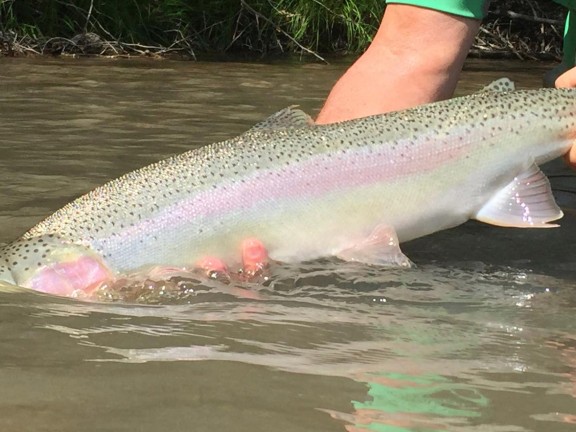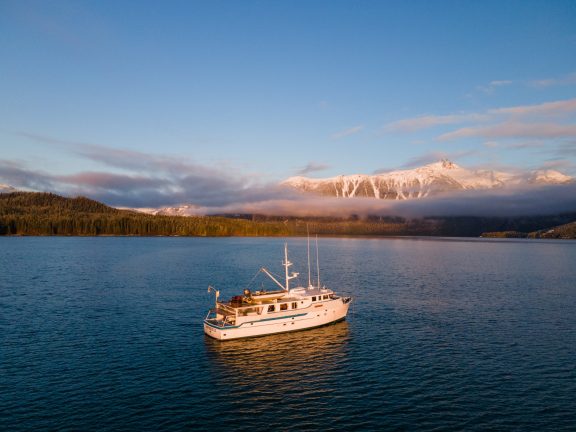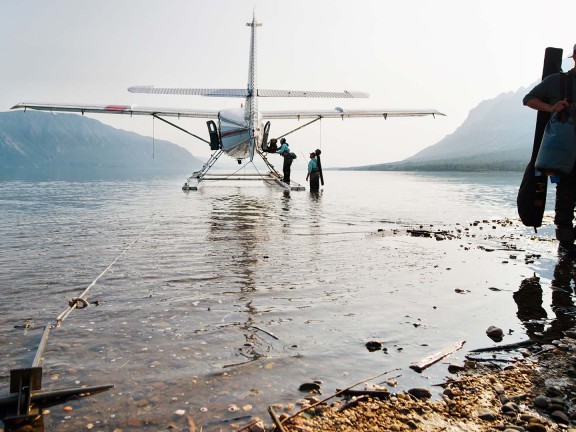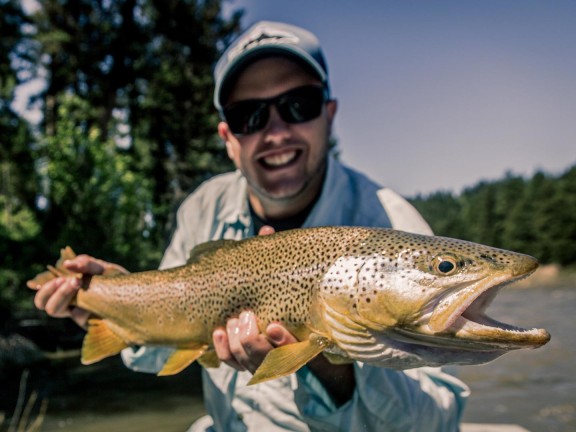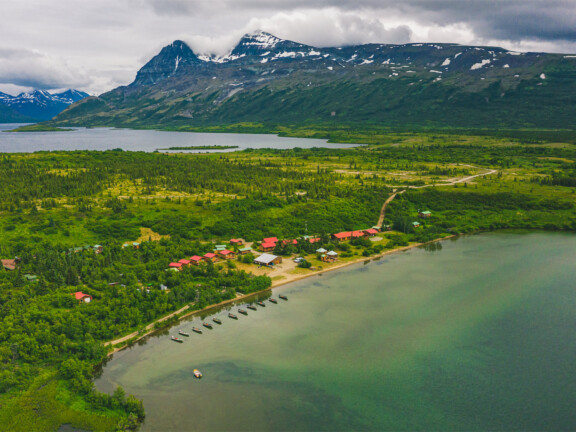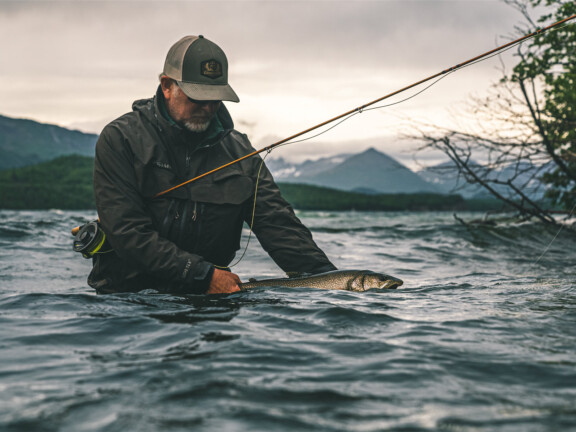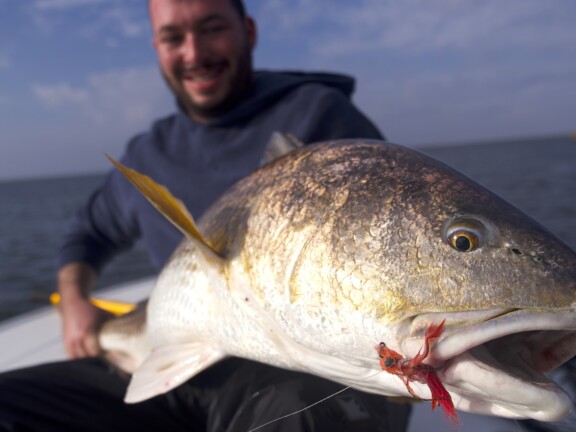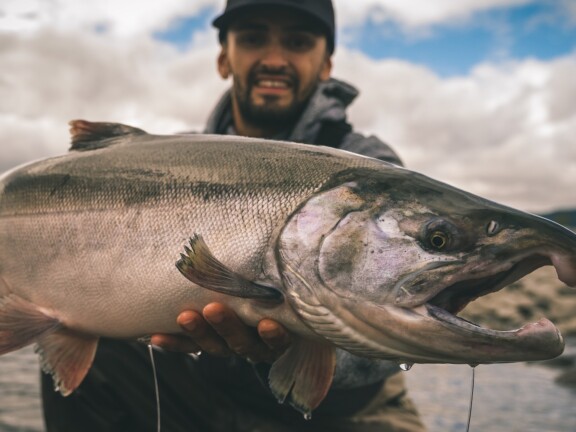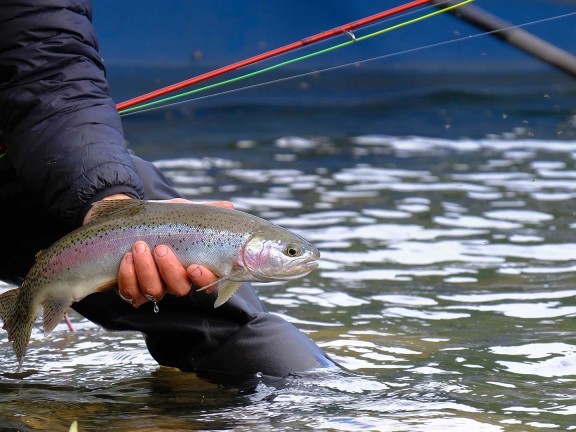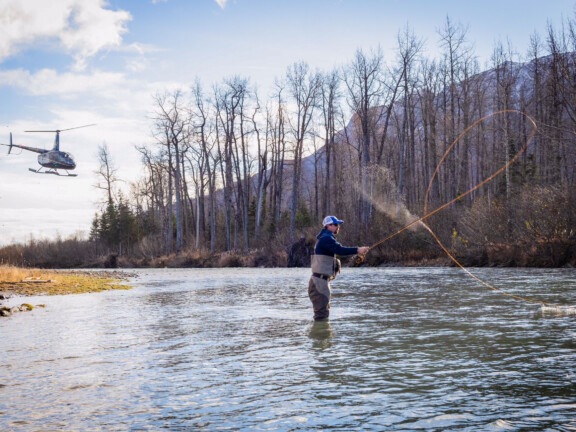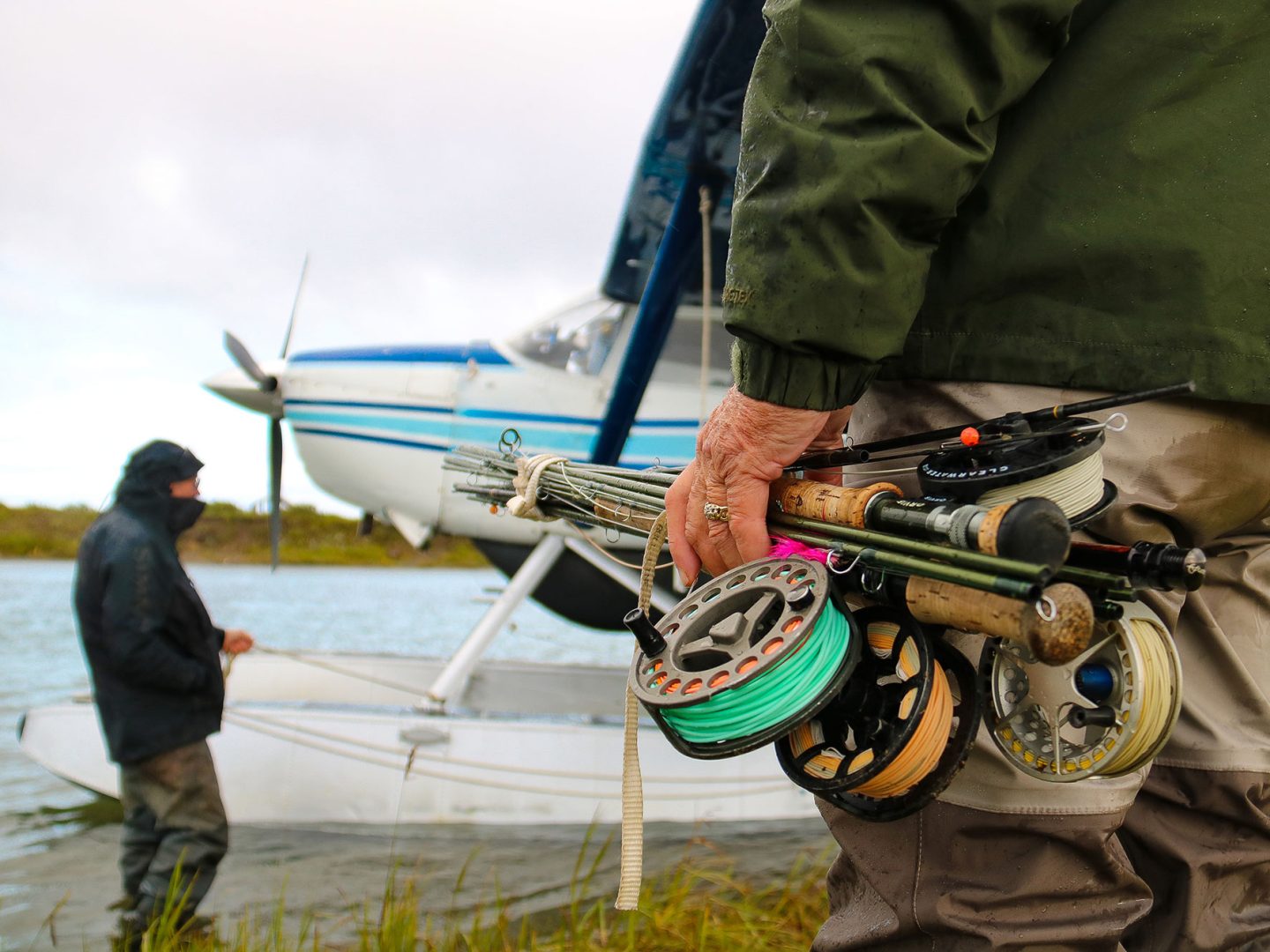
USA
When it comes to fly fishing, the United States is the land of opportunity. Situated nicely between Canada to the north and Mexico to the south, with the Bahamas and Hawaii conveniently located to either side, the US offers a nice one-two freshwater/saltwater punch that might be unmatched anywhere else in the world. And don’t forget that Alaska, which is like a country unto itself, is situated northwest of Canada and offers exhilarating wilderness fishing in a massive and remote landscape.
Fly fishing has a rich history in the United States and nowhere may that be more pronounced than in the Rocky Mountains. Many people consider the western US, particularly the states of Montana, Idaho, Colorado and Wyoming, to be the epicenter of the sport. When fishing this region, including Yellowstone National Park, fly-fishers ply the water in rafts and driftboats searching for big rainbow, brown and cutthroat trout, or they wade intimate streams while casting delicate dry flies to eager trout feeding on abundant hatches. Big rivers, highly productive lakes, small, intimate streams, high mountain lakes—trout anglers find it all in the Rockies.
In Alaska anglers target five species of Pacific salmon along with a revered breed of trout called the “leopard rainbow.” Alaska’s king salmon (also called chinook) grow to 50 pounds or more; silver salmon average about eight pounds but can reach 20 pounds or more; sockeye salmon return to Alaska’s streams by the multi-millions; and those leopard rainbow trout dominate the scene in southwest Alaska, where anglers fly out in bush planes and tempt bows that can grow to 20 pounds. Steelhead are abundant in Alaska, too. They range from the Alaska Peninsula to Kodiak Island and the Kenai Peninsula, and also south through the Alexander Archipelago where they are documented in more than 200 streams. These fish average about 10 pounds, are aggressive and fight hard. When conditions are right anglers target fresh fish arriving on the tides, chrome-bright steelhead with bad attitudes that still have sea lice attached to their sides. When you throw in great options for dolly varden, massive northern pike, sheefish, eager grayling, and host of other species, it’s not hard to see why Alaska is consistently voted as the best state for fishing in the US.
Fly fishers also target salmon and steelhead in the Pacific Northwest, primarily in Washington, Oregon, and Idaho. Legendary areas, such as the Oregon Coast, the Olympic Peninsula, and the Columbia/Snake river complex still call out to anglers . . . even though these anadromous runs are only slivers of what they were in the past. Fortunately, these states all offer great stillwater trout fishing for beastly rainbows, browns and cutthroat that are usually measured in pounds rather than inches. This area also offers outstanding warmwater fishing for bass, crappie, bluegill, carp and even tiger muskie. Walleye also are available and if you can crack their code you might end up with a 10-to 15-pounder in the net—these fish grow fast and big in the West.
Speaking of warmwater, the upper Midwest is the place to be if you want to hang out with muskie junkies who wind their lives around the pursuit of this challenging species. These fly fishers get up before the crack of dawn, float meandering rivers and also fish large lakes, pushing the limits of their tackle and endurance for shots at fish that could surpass the 50 pound mark. If getting into muskie culture is your game, along with fishing for smallmouth bass, this is the place to be.
Nestled between Texas and Mississippi, Louisiana is the epicenter of red-fishing in the southern US. This unique area offers numerous deltas, grassy flats and oyster beds, including the amazing Biloxi Marsh, that serve as perfect red drum habitat. Redfish commonly range between 10 and 30 pounds and eagerly charge large flies, making a trip for these drum a perfect experience for first-time saltwater fly-fishers. While fishing in Louisiana anglers also get shots at big black drum, sheepshead, and alligator gar.
Whether you’re an American wanting to explore your own backyard or a well-traveled destination angler looking for new adventures, you can find it in the United States. Plan a trip here and you’ll come back with lifetime memories and the photos to prove how unique and productive these fisheries can be.
USA
ContinuedWhen it comes to fly fishing, the United States is the land of opportunity. Situated nicely between Canada to the north and Mexico to the south, with the Bahamas and Hawaii conveniently located to either side, the US offers a nice one-two freshwater/saltwater punch that might be unmatched anywhere else in the world. And don’t forget that Alaska, which is like a country unto itself, is situated northwest of Canada and offers exhilarating wilderness fishing in a massive and remote landscape.
Fly fishing has a rich history in the United States and nowhere may that be more pronounced than in the Rocky Mountains. Many people consider the western US, particularly the states of Montana, Idaho, Colorado and Wyoming, to be the epicenter of the sport. When fishing this region, including Yellowstone National Park, fly-fishers ply the water in rafts and driftboats searching for big rainbow, brown and cutthroat trout, or they wade intimate streams while casting delicate dry flies to eager trout feeding on abundant hatches. Big rivers, highly productive lakes, small, intimate streams, high mountain lakes—trout anglers find it all in the Rockies.
In Alaska anglers target five species of Pacific salmon along with a revered breed of trout called the “leopard rainbow.” Alaska’s king salmon (also called chinook) grow to 50 pounds or more; silver salmon average about eight pounds but can reach 20 pounds or more; sockeye salmon return to Alaska’s streams by the multi-millions; and those leopard rainbow trout dominate the scene in southwest Alaska, where anglers fly out in bush planes and tempt bows that can grow to 20 pounds. Steelhead are abundant in Alaska, too. They range from the Alaska Peninsula to Kodiak Island and the Kenai Peninsula, and also south through the Alexander Archipelago where they are documented in more than 200 streams. These fish average about 10 pounds, are aggressive and fight hard. When conditions are right anglers target fresh fish arriving on the tides, chrome-bright steelhead with bad attitudes that still have sea lice attached to their sides. When you throw in great options for dolly varden, massive northern pike, sheefish, eager grayling, and host of other species, it’s not hard to see why Alaska is consistently voted as the best state for fishing in the US.
Fly fishers also target salmon and steelhead in the Pacific Northwest, primarily in Washington, Oregon, and Idaho. Legendary areas, such as the Oregon Coast, the Olympic Peninsula, and the Columbia/Snake river complex still call out to anglers . . . even though these anadromous runs are only slivers of what they were in the past. Fortunately, these states all offer great stillwater trout fishing for beastly rainbows, browns and cutthroat that are usually measured in pounds rather than inches. This area also offers outstanding warmwater fishing for bass, crappie, bluegill, carp and even tiger muskie. Walleye also are available and if you can crack their code you might end up with a 10-to 15-pounder in the net—these fish grow fast and big in the West.
Speaking of warmwater, the upper Midwest is the place to be if you want to hang out with muskie junkies who wind their lives around the pursuit of this challenging species. These fly fishers get up before the crack of dawn, float meandering rivers and also fish large lakes, pushing the limits of their tackle and endurance for shots at fish that could surpass the 50 pound mark. If getting into muskie culture is your game, along with fishing for smallmouth bass, this is the place to be.
Nestled between Texas and Mississippi, Louisiana is the epicenter of red-fishing in the southern US. This unique area offers numerous deltas, grassy flats and oyster beds, including the amazing Biloxi Marsh, that serve as perfect red drum habitat. Redfish commonly range between 10 and 30 pounds and eagerly charge large flies, making a trip for these drum a perfect experience for first-time saltwater fly-fishers. While fishing in Louisiana anglers also get shots at big black drum, sheepshead, and alligator gar.
Whether you’re an American wanting to explore your own backyard or a well-traveled destination angler looking for new adventures, you can find it in the United States. Plan a trip here and you’ll come back with lifetime memories and the photos to prove how unique and productive these fisheries can be.
All USA Lodges
Get in touch today to start planning your next fly fishing adventure!
You’ve got fly-fishing travel in your blood. We make high-adventure happen.
